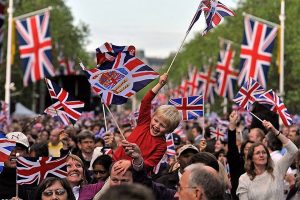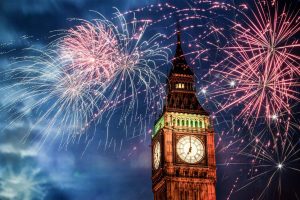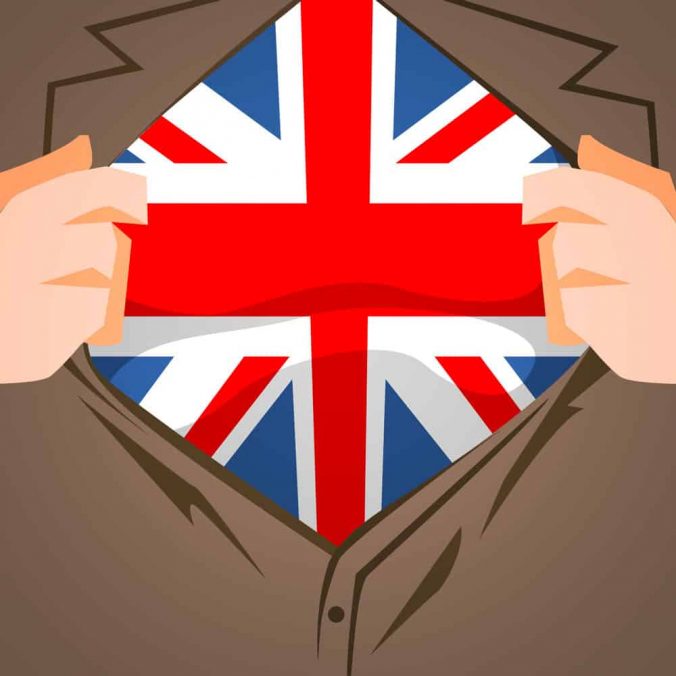All nations have their own national holidays, traditions and customs that are unique to their culture and api translation. Holiday events are loved by the inhabitants of each country, they prepare for them, wait for them eagerly, celebrate with pleasure and regret to part until the next year. English holidays are an integral part of the culture of the English-speaking world, a way of their self-expression, the source of their habits and behavior. Often, in order to understand the soul and character of the inhabitants of a particular country, it is necessary to get acquainted with their customs and traditions. Let’s look at the most famous holidays celebrated by the inhabitants of English-speaking countries.
Holidays in England
The New Year, January 1st. The most important custom of this winter holiday, which is invariably revered by the English – the tradition of the first guest. If after midnight a dark-haired man enters the house, the next year will be good for this family. The guest should bring with him a coal and, without saying a word, throw it into the fireplace, and only then congratulate the hosts. This custom means that peace and prosperity will reign in the home.
Valentine’s Day, February 14. One of the most beloved holidays of the British, which is celebrated in all its glory. The secret giving of gifts, the pairing by lot, the exchange of sweets and soft toys – this Valentine’s Day consists of surprises. And, of course, lots of all sorts of hearts.
Mother’s Day, March 22. The analogue of our March 8. This holiday has its roots in the Victorian era, when children from a young age had to earn money by hard work, being away from home. And only one day a year they could spend with family. Now it’s a holiday in England when children give their mothers flowers and touching gifts.
Walpurgis Night, April 30. A coven or fertility festival. According to legend, at this time all the witches gather together and the gates to the land of elves are opened. The streets of England are filled with witches of all ages – not real witches, of course, but citizens in carnival costumes. This holiday also marks the imminent arrival of summer.
Chimney Sweep Festival, May 1. The English believe that meeting a chimney sweep is a very good sign that brings good luck and happiness. That is why they are very often invited to weddings. This tradition originated long ago, since the times when the hard work of chimney sweeps was revered – they were respected at all times and considered noble people.
Festival of street entertainment, August 12. This festival lasts for several days, the streets of the cities are filled with noisy crowds. Carnivals, parades, concerts, theatrical performances, folk festivals, colorful fairs, contests and rides – on this day few people stay at home, everyone succumbs to the general noisy and cheerful mood.
Halloween, October 31. Every year on this day, the streets of England turn into a real fairy tale with witches in hats, devils with pitchforks, sinister pumpkins, and other “cute” characters. Children dressed as fairy tale characters go door-to-door with baskets, and tradition has it that they must be treated to candy, or there will be no luck.
Christmas, December 25. A favorite holiday not only for English children, but also for the older generation. According to tradition, all the inhabitants of England hang stockings or socks on the fireplace, so that Santa Claus can put gifts in them. If the legend is believed, once upon a time Santa through a chimney accidentally dropped a gold coin into a sock, and since then it became a custom to hang on Christmas Eve stockings on the fireplace – just in case something would fall there?
Holidays in Scotland
New Year’s Eve, January 1. In Scotland, this holiday is called Hogmanay and is celebrated on a larger scale than Christmas. Here as well as in England, there is a tradition of the first guest to bring cookies, whiskey or fruitcake. After midnight, the owners open the doors of their homes wide to say goodbye to the old year, and torchlight processions are staged in the streets to drive away evil spirits.
Robert Burns Night, January 25. A very revered holiday in Scotland in honor of the folk and famous poet, whom the Scots are very proud and every year honors his memory. The event is celebrated according to a certain scenario, in national costumes, with scenes, poetry readings, songs, dances and a gala dinner.
Whiskey Festival, May 3. No specific origins of this holiday, on this day the Scots just gather to have fun. The noble alcohol flows in torrents and competitions are organized with prizes which are rare whiskeys.
Independence Day, June 24. According to the history, on this day in 1324 Robert the Bruce (King of Scotland) defeated the English king and restored independence to his country. Today this holiday is celebrated “on a grand scale” – with folk festivals, concerts, festivals, national songs and dances.
Bagpipe Championship, August 14. This event is held annually in Green Park (Glasgow) throughout the day. The prerequisite: each participant must be dressed in the national Scottish costume with the obligatory kilt skirt.
St. Andrew’s Day, November 30. Day of the patron saint of Scotland, St. Andrew, the official holiday of the country. It is celebrated very widely: with performances, fairs, music and dancing. On the tables on this day present exclusively traditional food.
Holidays in Ireland
New Year’s Day, 1 January. The oldest holiday in Ireland is celebrated mostly in a family circle around the festive table. On New Year’s Eve the Irish customarily open the doors for good luck, cook national dishes (pudding and cumin pie), and wait for any guests who traditionally should bring the hosts bread and salt. Fireworks and fireworks, alas, do not happen in Ireland, as they are forbidden by law.
St. Patrick’s Day. March 17. Saint Patrick is the patron saint of Ireland, so this holiday is considered very important to the Irish. Only in this country it is celebrated with a grandiose scope and marks the arrival of spring. People wear red wigs and green suits and, remembering to take pots of clover (the symbol of Ireland), rush to the parade, where dancing, music and fireworks await them.
Harvest Festival, August 1. In Ireland, the imminent arrival of autumn is greeted with the Lughnasadh festival, which means “wedding of the Meadow.” Its essence is in gratitude to the gods for a good harvest. On this day, the Irish eat loaf of grain from the new harvest, make bonfires on the hills, bake traditional blueberry pies and make straw dolls.
Christmas, December 25. Considered the most important holiday in Ireland. Children decorate the Christmas tree, hang red socks on the fireplace, leave pies for reindeer Santa Claus, adults stuff a turkey and make a pudding of dried fruit, hang bells and wreaths of holly on doors. And artists of different genres perform in the streets, choirs sing Christmas carols, and there are fair and sale fairs.
St. Stephen’s Day, December 26. A holiday celebrated only in Ireland. On this day all Irish boys dress up as chimney sweeps, smear soot on their faces, sing hymns, and collect money, which then goes to charity. There are also horse races on this day, as St. Stephen is the patron saint of horses.
Holidays in Australia
New Year’s Day, January 1. New Year’s Eve comes before everyone else in Australia. This holiday is celebrated in a boisterous way, with musical shows and magnificent fireworks. After the clock strikes midnight, all festivities are traditionally interrupted by the ringing of bells and honking of car horns, after which Australians continue the celebration at picnics, rodeos, beach parties, costume carnivals, etc.
Australia Day, January 26. The most beloved holiday of the people of this country. All over Australia there are parades and regattas, and in all regions fireworks go up in the sky. There are music festivals, cricket matches and the Australian of the Year Awards – the locals celebrate in style. Homes are decked out in flags and balloons and everyone gives each other gifts.
Royal Regatta, 9 February. This holiday lasts for three days and draws huge crowds of spectators. The regatta includes water skiing, rowing, boat racing, sailing, and a colorful event in which the prettiest girl receives the title “Miss Regatta.” There are also exciting shows – swimming competitions and performances by skydiving professionals.
Mardi Gras Festival, February 24. Parade-carnival of people of non-traditional sexual orientation. This is the largest festival in the world, carrying an almost cult-like connotation. Every year the event draws crowds of spectators to see dancers in erotic costumes, exotic cabaret, theatrical performances and musical shows. Every year this festival is attended by celebrities from all over the world.
Harmony Day, March 21. In Australia, this is not so much a holiday as a social event. On this day, every Australian attaches an orange ribbon to his or her clothes, thereby protesting against racism and racial discrimination. Schoolchildren wear an orange badge and sticker with a picture of happy people of different races, and students draw leaflets and hand them out to passers-by – this is how Australians say “no” to racism.
Father’s Day, September 6. The essence of the holiday is to emphasize what an important role a father plays in the upbringing of his child. In Australia, this day is celebrated with great joy, children enthusiastically draw cards for their dads, uncles and grandfathers, make their own hand-made crafts, and give the most popular gift – a necktie. Father’s Day is a homemade holiday, where the whole family gathers and arranges exciting intellectual games.
Christmas, December 25. This holiday takes place in Australia in a very colorful and original way. Vendors, drivers and ordinary employees wear reindeer hats and Santa Claus walks through shopping malls and takes pictures with children. On Christmas night, life on the streets of the cities comes to a standstill as everyone gathers around the holiday table. Traditional holiday dishes are turkey, fruit salad, and seafood.
holiday table. Traditional holiday dishes are turkey, fruit salad, and seafood.
Boxing Day, December 26. A day when all Australians traditionally exchange gifts. What’s interesting: if the gift is not to your liking, the giver can exchange it in a store for something else. The gift is presented in a box, so it was unpacked for a long time – for the intrigue. That is the essence of this Australian holiday.
Holidays in the USA and Canada
New Year’s Day, January 1. In Canada and many U.S. states, it is customary to celebrate New Year’s Eve wearing masquerade costumes and masks, which are removed at midnight. In other states, people simply gather as a family around a festive table with traditional New Year’s Eve food. Also, large numbers of people come especially to New York City to watch a grand holiday concert with fireworks in Times Square.
Groundhog Day, February 2. A much-loved annual holiday among Americans. They believe that the groundhog can predict the approach of spring, all you have to do is watch its behavior. According to the belief, if the groundhog crawls out of his burrow quietly, winter will soon be over. If he looks out and hides again, the cold will last at least another month. Groundhog Day is often celebrated by festivals, which attract many tourists.
Valentine’s Day, February 14. A traditional holiday in the U.S. and Canada, accompanied by valentine hearts and chocolates. Recently, on Valentine’s Day in these countries it is customary to give modern gadgets and other practical and useful things. February 14 accounts for the largest number of wedding ceremonies.
Grandparents’ Day, September 5. This holiday was invented by a West Virginia housewife. But Americans liked the idea so much that it was decided to make the holiday a national holiday. On this day, the whole family comes to their elders with flowers and gifts to play old-fashioned games and revisit yellowed photographs, and grandparents treat their children and grandchildren to sweet pies.
Halloween, Oct. 31. The most popular holiday in the United States and Canada, also called All Saints’ Day. It’s almost a fairy tale spectacle as children dressed up in “scary” costumes knock on the doors of homes with the words “Trick or Treat!” in hopes of getting candy. Homes are decorated with “burning eyes” pumpkins, black cat figurines, witch puppets, and other mystical creatures and symbols.
Thanksgiving Day, November 26. It is also a very popular holiday among Americans. It is associated with a lot of traditions which residents sacred reverence – necessarily go to church service and gather with the whole family at the festive table. On this day charity thrives – gifts are distributed to the homeless and needy. The most important attribute of the holiday is a stuffed turkey.
Christmas, December 25. People in the U.S. and Canada prepare for this holiday in advance by buying gifts and Christmas decorations and decorating homes with tinsel and lights. All states sparkle with festive lights and colorful lanterns, and the main tree of America lights the president himself. Children dressed as angels go around the neighborhoods singing Christmas carols, for which they traditionally receive candy and sweets.

